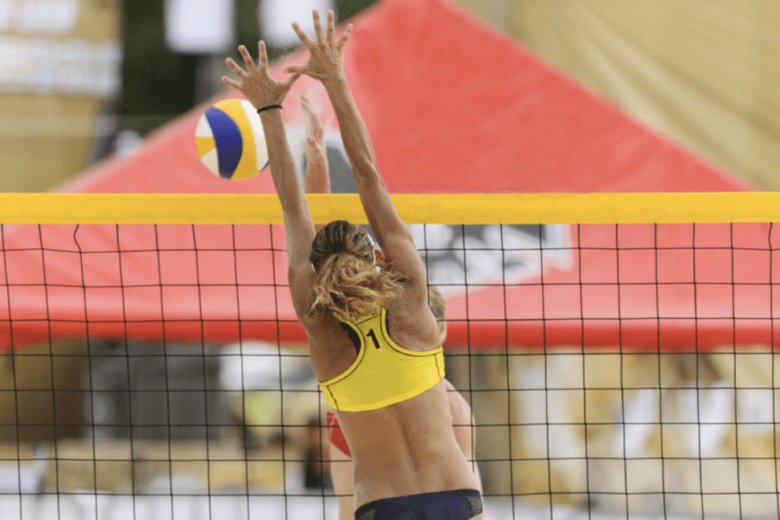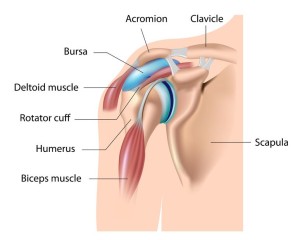Use our convenient online scheduler to book an appointment now.

Shoulder Anatomy
Traditionally, it was thought that a spur on the undersurface of your acromion (the bone that makes up the roof of your subacromial space) dug into the underlying rotator cuff. First, causing impingement syndrome and then later rotator cuff tears. More recently, we have come to realize that impingement syndrome is not so much due to “the roof” coming down, as it is to “the floor” coming up.
What do I mean by this? Well, for various reasons, the humeral head, which is covered by the rotator cuff and essentially makes up the floor of the subacromial space, can, at times, elevate excessively. This reduces the subacromial space, leading to the bursa, that rests on top of the rotator cuff, getting irritated and inflamed. This, along with degeneration of your rotator cuff, causes the pain found in impingement syndrome.
Impingement Syndrome: Why does the humeral head rise up?
There are several reasons that your humeral head may rise excessively.
Sometimes with increased shoulder use, our rotator cuff may fatigue. This often occurs when we overdo activities above our head or use our shoulders more than usual. Similarly, fatigue of other shoulder muscles may require your rotator cuff to work harder. This may ultimately also lead to rotator cuff fatigue. Either way, when the rotator cuff weakens, it can’t function normally. As a result, the humeral head may rise. Likewise, as the rotator cuff ages, and becomes degenerated (“tendinosis“) or when it tears, it also may not have the usual strength and endurance. So it can also fatigue early.
Finally, tightness of the inner lining at the back of the shoulder (posterior capsule) can lead to the humerus rising higher during certain motions than it normally would otherwise. This tightness is seen as a difficulty reaching behind your back and is a very common finding in impingement syndrome. So common, that it’s absence calls into question whether impingement syndrome actually exists.
The Two Boneheads
My colleague, Dr. Howard Luks, and I differ a little on our opinion as to the main source of pain in impingement syndrome (Dr. Luks – tendinosis, me – bursitis) but we both agree that the primary problem is not that the roof (spur) comes down.
Watch the following video as The Two Boneheads, Dr. Luks and I, discuss this common shoulder problem. For additional information about this problem, read some of my other posts on impingement syndrome. You can learn about what impingement syndrome is, it’s common symptoms, how to treat it and what the surgery for this problem is all about.
Join our Mailing List
TCO provides patients with orthopedic problems the trusted resources and patient-centered advice they need to “Feel Better. Move Better. Be Better.”
© 2024 Town Center Orthopaedics | All Rights Reserved



